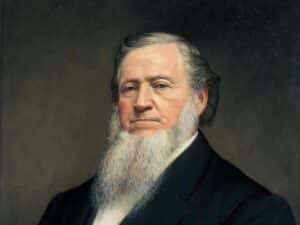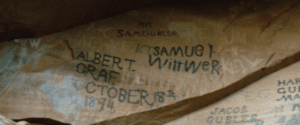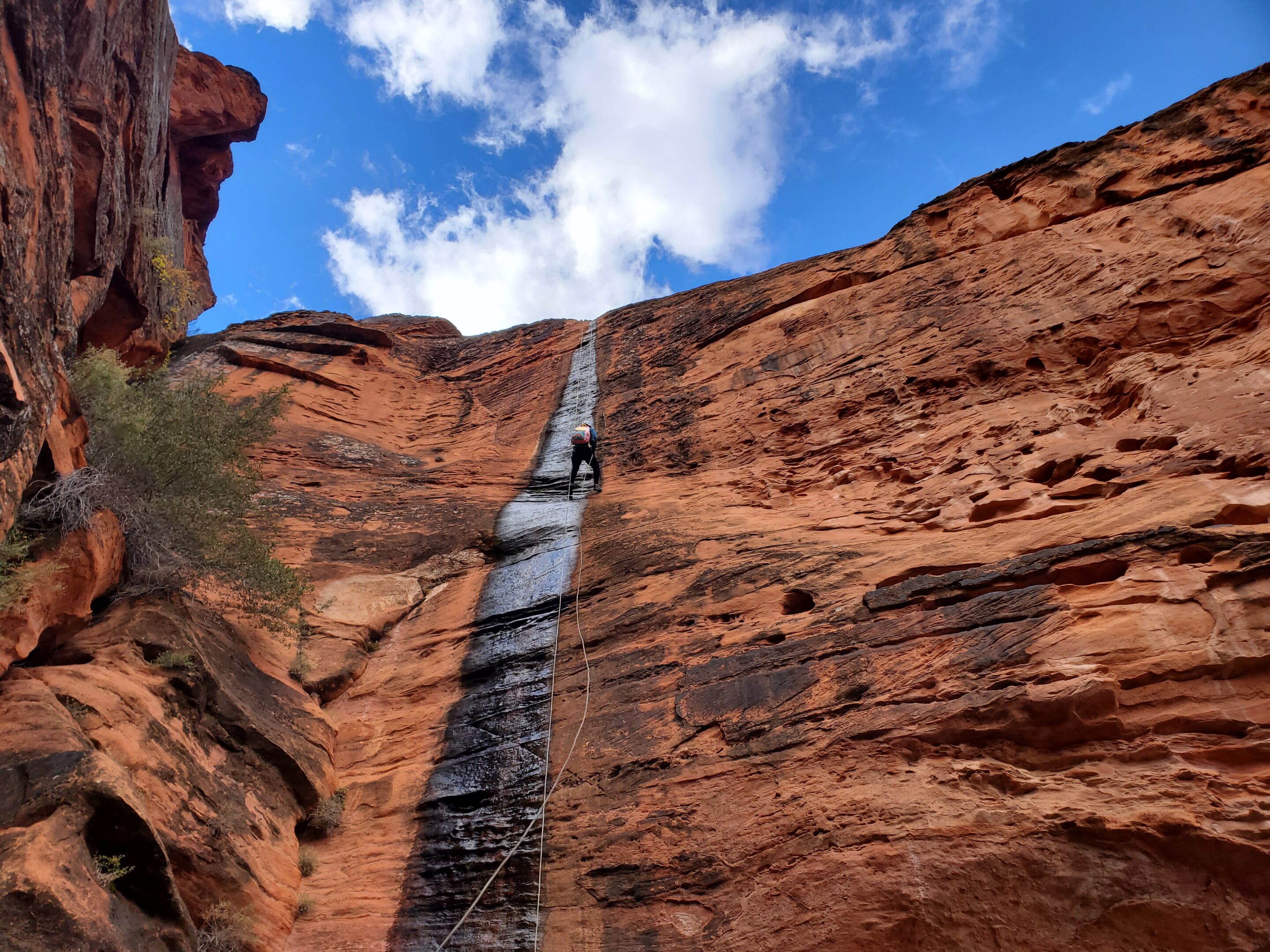Snow Canyon State Park, nestled in the high desert of southwestern Utah, offers a vivid palette of red, orange, and white sandstone cliffs. This park, just a short drive from St. George, spans approximately 7,400 acres and at an elevation of over 3,000 feet, providing a sanctuary for those seeking the serene and unique beauty of the Southern Utah. Its history, as rich as its landscape, tells the story of millennia, cultures, and the transformative power of nature.
Early History and Indigenous Peoples
Human presence in Snow Canyon dates back to 500 B.C., where the earliest inhabitants left behind evidence of their lives through rock art and archaeological sites. The Ancestral Puebloans, often called the Anasazi, from occupied the area A.D. 200 to 1250 and relied heavily on the canyon for its resources. They utilized the canyon area for hunting and gathering, supplementing their agricultural efforts closer to the river with the bounty it provided.
Following the departure of the Ancestral Puebloans, the Southern Paiutes, of which the nearby Shivwitz Band of Paiutes is a part, inhabited the region from A.D. 1200 into the mid-1800s. Their utilization of the canyon was characterized by a continuation of hunting and gathering practices, with a particular emphasis on deer, rabbits, and the collection of seeds, roots, nuts, and berries. The Southern Paiutes’ craftsmanship, demonstrated through the creation of baskets, sandals, and other items from canyon resources, highlights their resourcefulness and the cultural significance of the area to their daily lives.
European Exploration and Settlement
The exploration and subsequent settlement of Snow Canyon and the surrounding regions by Europeans began notably with the journey of the Dominguez-Escalante Party in 1776. This expedition, led by Franciscan friars Francisco Atanasio Dominguez and Silvestre Velez de Escalante, sought to find an overland route from Santa Fe, New Mexico, to the Spanish missions in California. They left Santa Fe in July 1776, navigating through what is now Colorado, then into Utah, ultimately crossing the Colorado River near present-day Moab. Their journey took them into the heart of Utah, including the areas surrounding Snow Canyon, marking the first European exploration of the area, and likely the Southern Paiutes’ first interaction with outsiders. The expedition, recorded in Escalante’s journal, laid the groundwork for future explorers and set a precedent for the mapping and understanding of the Western United States. Though they did not reach California due to harsh winter conditions and were forced to return to Santa Fe, their trek was not fruitless; they ultimately revealed the potential for settlement in the region.

Brigham Young, who oversaw the Mormon settlement of the area.
Following this initial exploration, the region saw further interest from fur trappers and government survey teams, drawn by the promise of rich lands documented by the friars. However, it was the arrival of Mormon pioneers in the mid-19th century that marked the beginning of significant settlement. Under the direction of Brigham Young, these settlers established communities in the surrounding areas, including St. George in 1861.
They may not have been immediately aware of Snow Canyon, but according to the state parks department, it came to their attention after pioneers wandered in searching for lost cattle. After this, Snow Canyon became a site for grazing, exploration, and leisure for these new settlers. The canyon’s unique geological features and potential for agriculture likely made it an area of interest for these communities looking to establish a new life in the West. Evidence of their leisurely visits and exploration can still be found on the Pioneer Names trail, where several pioneers signed their name.
This marked a pivotal shift in the canyon’s history, from a relatively undisturbed natural landscape to one intertwined with human settlement and use.
Transition to State Park

Pioneer Names trail, the site where pioneers have left their mark on Snow Canyon
An area within the canyon was officially designated as a park in 1958, initially named Dixie State Park. This foundational step was followed by the donation of 296 acres from Washington County to the State Parks Commission in 1959, marking the park’s early development phase. Not too long after this, the state made several separate land purchases within the canyon, including the acquisition of Joseph Blake’s 898-acre ranch. These acquisitions were pivotal in shaping the park’s current expanse and offerings, reflecting its growth from a small, donated parcel toward the more substantial recreational and natural preserve it is today.
Naming and Development
The park was named in honor of Lorenzo and Erastus Snow, prominent figures in Utah’s early history. Since its establishment, Snow Canyon has undergone numerous developments, from infrastructural enhancements to the introduction of recreational facilities, making it accessible and enjoyable for visitors. Efforts were made to preserve its natural beauty while accommodating the needs of the public, including the construction of trails, picnic areas, and campgrounds.
Cultural and Recreational Significance

Rappelling in Snow Canyon
Snow Canyon has not only served as a backdrop for numerous films, adding to its cultural significance but also remains a favored destination for outdoor enthusiasts. Its diverse landscape offers opportunities for![]() hiking, rock climbing, and exploration, attracting visitors from around the world. The park’s trails wind through lava flows, sand dunes, and rock formations, each telling a story of geological processes and human interaction with the land.
hiking, rock climbing, and exploration, attracting visitors from around the world. The park’s trails wind through lava flows, sand dunes, and rock formations, each telling a story of geological processes and human interaction with the land.
While in the canyon researching for this piece, we interviewed one visiting adventurer named Evan, who told us: “Everyone’s heard of Zion, and most come down here without ever having heard of Snow Canyon. I’ve been all around this canyon over the years—hiking, climbing, rappelling; you name it, and let me tell you, there are some hidden treasures in this canyon that are every bit as good as anything Zion has to offer.”
Modern Use and Conservation
As a protected area that focuses on preserving its ecosystem and historical sites, Snow Canyon has found a great balance with recreational use. A significant conservation effort at Snow Canyon is the Tortoise Education Trail project, with an estimated budget of $50,000-$55,000, funded mainly through donations. This initiative, led by Friends of Snow Canyon State Park, aims to educate visitors about the desert tortoise and the significance of habitat conservation. The Friends of Snow Canyon, a nonprofit group, supports the park through fundraising, advocacy, and volunteering, highlighting community involvement in conservation efforts.
Additionally, Snow Canyon offers a variety of trails with different access restrictions to protect sensitive areas. For example, Johnson Canyon is open only for a few months each year, and Jenny’s Canyon closes temporarily to protect nesting birds.
The park is also upgrading its infrastructure to enhance visitor experience and environmental protection, such as adding a partial shade pavilion at Paradise Canyon and improving existing facilities. Volunteer efforts help maintain and reroute trails, like the Lava Flow trail, to ensure safety and enjoyment for visitors while preserving the park’s natural state.
Snow Canyon captures both the unique natural and cultural history of Southern Utah. Through its conservation efforts and recreational opportunities, it offers a great venue for exploring the natural and cultural heritage of the region. For those interested in casual adventures in Snow Canyon, we invite you to check out the Kova Guide to Snow Canyon. This guide is an excellent resource for planning your visit and looking for more leisurely experiences and adventures in Snow Canyon State Park.

Recent Comments